#Egyptian Tombs
Explore tagged Tumblr posts
Text

#cleopatra#egyptian jewelry#egyptian antiquities#ancient egypt#egypt#egyptian royalty#eqyptian architecture#egyptian aesthetic#queen of egypt#egyptian art#egyptian#egyptian pyramids#egyptian pharaoh#egyptian tombs
2 notes
·
View notes
Text
Journey Through Time Discovering Egypt Wonders #Egypt,#AncientEgypt,#Pharaohs,#Pyramids,#Sphinx,#Ni
#Egypt,#AncientEgypt,#Pharaohs,#Pyramids,#Sphinx,#NileRiver,#Cairo,#Luxor,#TutankhamunTomb,#Cleopatra,#Hieroglyphics,#Mummies,#Archaeology,#EgyptianMythology,#EgyptianCulture,#EgyptTravel,#EgyptianArt,#GizaPyramids,#KingTut,#EgyptianGods,#Alexandria,#EgyptianTemples,#CairoMuseum,#EgyptianTombs,#RedSea,#Hieroglyphs,#NileCruise,#EgyptianMuseums,#EgyptianArtifacts,#EgyptianAntiquities,#EgyptianArchi…

View On WordPress
#Alexandria#ancient egypt#archaeology#Cairo#Cairo Museum#Cleopatra#egypt#Egyptian Art#Egyptian Civilization#Egyptian Culture#Egyptian desert#Egyptian Gods#egyptian history#Egyptian museums#Egyptian Mythology#Egyptian pharaohs#Egyptian Temples#Egyptian Tombs#Giza Pyramids#Hieroglyphics#Hieroglyphs#King Tut#Luxor#Mummies#mummy#Nile cruise#Nile River#Pharaohs#pyramids#Ramses II
0 notes
Text


Yuugang definitely hides behind Yami when they get spooked
#yugi’s technically in front but he’s in the puzzle so he gets a pass#long time no yugioh#!!!#alliebirb art#doodles#this in part comes from watching coryxkenshin play amenti#(ancient egyptian tomb horror game)#and imagining them making yami play it while they hide their eyes and scream at every jumpscare#meanwhile yami will at most jolt slightly and most of the time it’s just from jono’s yell#‘so do you think this has good accuracy?’#yami knowing remembering literally zero and now questioning if his dead body is gonna get up and move around: ‘i… suppose?’#anyways get yourself an ancient egyptian guard dog#yugioh#yami yugi#jonouchi katsuya#yugi muto#honda hiroto#anzu mazaki#miho nosaka
1K notes
·
View notes
Text
The Choir!

#Egyptian tomb Bats#bats of Africa#bat of the day#daily bat#bat bats#bat#bats#batposting#cute bats#cute animals#eyebleach#Look at these guys#THREE OF THEM#I love them
421 notes
·
View notes
Text
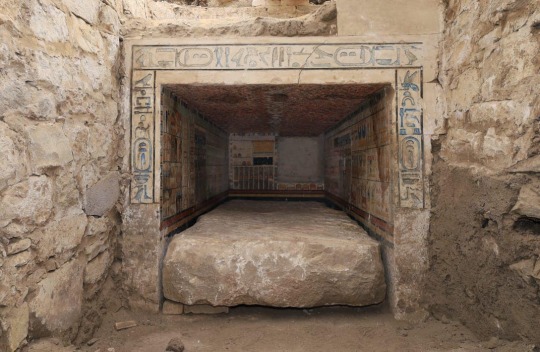
4,000-Year-Old Tomb of Egyptian Royal Physician Found in Saqqara
Teti Neb Fu, a high-ranking physician during Pharaoh Pepi II's reign, held titles like Chief Dentist, Priest of Serket, and Director of Medicinal Plants.
In the southern region of the Saqqara archaeological site, a joint French-Swiss archaeological team made an important discovery uncovering the mastaba tomb of the royal physician Teti Neb Fu from the Old Kingdom, according to a statement by the Egyptian Ministry of Tourism and Antiquities.
This tomb, unearthed in the southern region of the archaeological site of Saqqara, known to contain the tombs of high-ranking officials from the Egyptian Old Kingdom, shows that medicine and magic were once equally revered, and expertise in both earned a long-dead physician to the pharaohs a place of honor among the ancient world’s most esteemed.
Dating back over 4,000 years to the reign of King Pepi II, this important find features exquisite carvings and vibrant artwork, including a painted false door and elaborate scenes depicting funeral offerings.
The sarcophagus found inside the tomb was also inscribed with the name of its occupant and his titles, according to the post. Because of the burial location in Saqqara, researchers knew he was important, but Teti Neb Fu’s official titles named him as the chief palace physician.
Teti Neb Fu, who held prestigious titles such as Chief Palace Physician, Chief Dentist, and Director of Medicinal Plants, also had a unique role as a “Magician” of the Goddess Serket, specializing in the treatment of venomous bites.
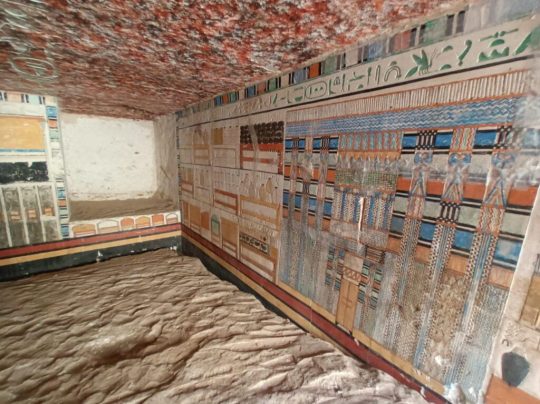
Additionally, he was known as the “Great Physician of Teeth” and “Director of Medicinal Plants”, suggesting that he led research and practical applications in the fields of dentistry and the use of therapeutic herbs.
Even though it had been looted in the past, the mastaba still has many of its ornamental features. The director of the archaeological mission, Dr. Philippe Collombert, said the walls are decorated with remarkable reliefs and inscriptions, including a complex frieze that displays the owner’s name and titles.
Among the most remarkable elements is the red-painted ceiling, which is intended to resemble granite blocks, a material commonly found in imposing buildings. The titles and name of the doctor are also written in the middle of the ceiling. An additional noteworthy discovery within the mastaba is a stone sarcophagus, which has hieroglyphic decorations inside that offer more information about Teti Neb Fu and his accomplishments.


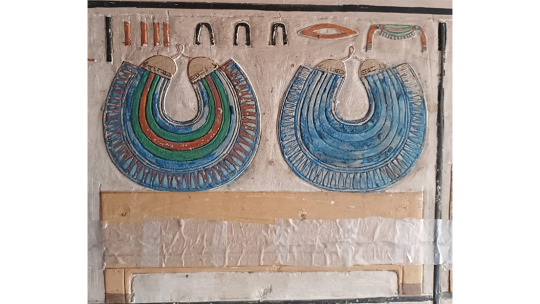
Mohamed Ismail Khaled, secretary-general of Egypt’s Supreme Council of Antiquities, emphasized the importance of this discovery, stating that the texts and drawings on the tomb’s walls unveil new insights into the daily life of the Old Kingdom.
This discovery strengthens Saqqara’s position as one of Egypt’s most important historical sites and contributes to its rich archaeological legacy.
Excavations in this area of Saqarra began in 2022, to unearth the graves of state employees for King Pepi who are buried near him and his wives, officials said.
By Oguz Buyukyildirim.
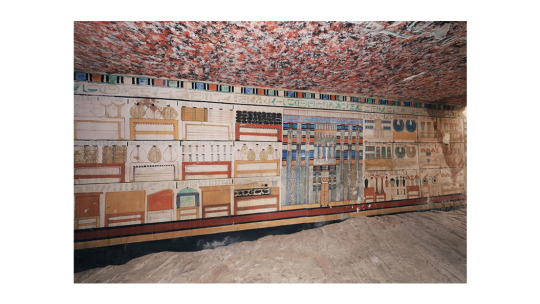
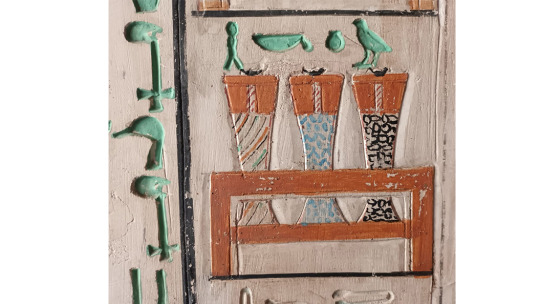
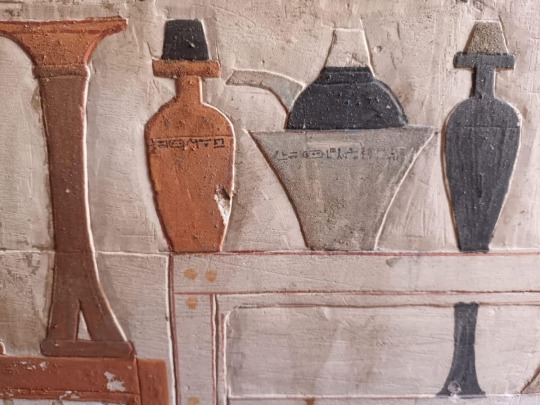
#4000-Year-Old Tomb of Egyptian Royal Physician Found in Saqqara#Saqqara#ancient tomb#ancient grave#ancient artifacts#archeology#archeolgst#history#history news#ancient history#ancient culture#ancient civilizations#ancient egypt#egyptian history#egyptian hieroglyphs#ancient art#Teti Neb Fu
311 notes
·
View notes
Text
People often assume that a person is primarily religious because they believe their religion is The Most Correct. However, I am a very strict believer in judaism and I love arguing for other religions.
I just got done outlining how exactly polytheism is advantageous over monotheism and it was incredibly fun. I love people and I love g-d and these two things coexist in perfect harmony
#jumblr#personal thoughts tag#even when i am agnostic i am monotheistic but i absolutely see the logic in polytheism#in fact i don't even see judaism as The Most Correct. i see judaism as correct (for some) but that's not unuque to us i think#i believe in judaism because i think it's correct and not because i want to feel superior by saying it's The Most Correct#i was reading about how ancient egyptians thought the afterlife would be and i pray that that afterlife is where they are now#i always pray that people end up in the afterlife they envision because it's always really lovely#you're telling me you'll be playing board games and playing with your pet and drinking wine in the afterlife?#and THAT'S why you're loading your tomb up with a bunch of stuff? that's AWESOME!!#plus those ancient egyptians helped us better understand them THOUSANDS of years later#and this is why i keep trying to learn new things about other religious practices. i've actually been meaning to look into confessionals#that one is something i still don't understand. i personally don't understand the point and THAT'S an issue to me#i want to see value in everything and g-d damn it if i don't
290 notes
·
View notes
Text



The West Cemetery of Highgate Cemetery, London
Feb. 2017
#highgate cemetery#cemetery#tomb#original photography#photography#taphophile#taphophilia#lensblr#photographers on tumblr#tombs#london#england#united kingdom#architecture#egyptian#wanderingjana
341 notes
·
View notes
Text

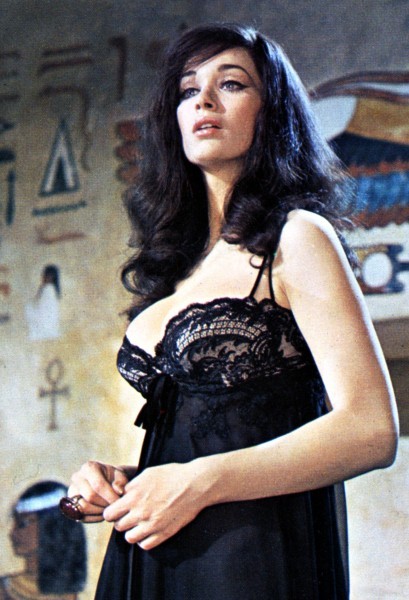

THE ART OF SUPER-SEVENTIES BRITISH HORROR -- THE LADIES OF HAMMER STUDIOS.
PIC(S) INFO: "Little Shoppe of Horrors" presents...Spotlight on back cover art to "Little Shoppe of Horrors" magazine #24, "The Journal of Classic British Horror Films." (published May 2010). Artwork by Bruce Timm.
EXTRA INFO: Back cover art of English actress Valerie Leon as Margaret Fuchs/Queen Tera, from the British horror film "Blood from the Mummy's Tomb" (1971), directed by Seth Holt and loosely based on Bram Stoker's 1903 novel "The Jewel of Seven Stars."
Sources: www.littleshoppeofhorrors.com/LSoH24.htm, Pinterest, & the Black Box Club (blog).
#1971#Blood from the Mummy's Tomb 1971#Vintage Horror#Timmverse#Valerie Leon#Hammer Film Productions#British Films#Hammer Horror#English Actress#Bruce Timm#Classic British Horror Movies#Horror Movies#Horror#Blood From The Mummy's Tomb#70s#Costume Design#Bruce Timm Art#Illustration#Hair and Makeup#Classic British Horror#1970s#Ancient Egyptian#Margaret Fuchs/Queen Tera#Valerie Leon 1971#Queen Tera#70s horror#Super Seventies#British horror
260 notes
·
View notes
Text

~ Basalt cups from a set of implements for the Ceremony of Opening the Mouth.
Period: 6th Dynasty
Place of origin: Tomb of Adu I, Dendera, Upper Egypt
Medium: Basalt
#ancient#ancient egypt#Egypt#Egyptian#basalt cups#ceremony of opening the mouth#tomb of adi i#dendera#6th Dynasty#history#archeology#museum
524 notes
·
View notes
Text

"Tell el-Yahudiya" Vase in the Shape of a Duck, c. 1700 BCE
Egypt, Middle - Early New Kingdom, late Dynasty 13 - early Dynasty 17
Thebes, Deir el-Bahri, Tomb of Iuy Pottery, smoke blackening & white gypsum, H. 9 cm The Metropolitan Museum of Art, New York 23.3.40
#animals in art#birds in art#bird#duck#pottery#ceramics#black and white#ancient art#Egyptian art#Metropolitan Museum of Art New York#vase#animal effigy#effigy vessel#tomb art#funerary art
55 notes
·
View notes
Text

#cleopatra#egyptian jewelry#egyptian antiquities#ancient egypt#egypt#egyptian royalty#eqyptian architecture#egyptian aesthetic#queen of egypt#egyptian art#egyptian#gold#egyptian pyramids#egyptian tombs
0 notes
Text

Tomb Robbers
85 notes
·
View notes
Text

The Hunter's Daughter (c. 1422–1411 BC) via the Ancient Egyptian collection Tomb of Menna (1422–1390 BC) wall and panel painting
#ancient egyptian art#ancient egypt#new kingdom#new kingtom style#tomb of menna#tomb of menna seris#**a#**
492 notes
·
View notes
Text
The Smoulder

#Egyptian Tomb Bat#bats of Africa#bat of the day#daily bat#bat#bats#batposting#cute bats#cute animals#the smoulder#Observe it
202 notes
·
View notes
Text

4,000-Year-Old Tomb Discovered in Egypt
Archaeologists have discovered the 4,000-year-old ancient Egyptian tomb of "Idi," a local governor's daughter who lived during Egypt's Middle Kingdom (circa 2030 to 1640 B.C.). She was buried within two coffins, one inside the other, representatives of the Egyptian Ministry of Tourism and Antiquities wrote in a statement on Facebook.
"Finding two intact Middle Kingdom coffins is extraordinary," Kathlyn Cooney, a professor of ancient Egyptian art and architecture at UCLA who was not involved with the excavation, said in an email. These coffins "not only seem well preserved but [are] covered with intricate coffin texts that helped the deceased find their way in the realm of the Underworld," Cooney said.
Studying the new coffin texts may provide more information on how the Egyptians viewed the afterlife, said Caroline Arbuckle, an assistant professor of history at the University of Saskatchewan who was not involved with the excavation. "It is always possible that Egyptologists will find new variations, and these help us to better understand what the ancient Egyptians were afraid might stop them from reaching their eternal paradise, or what they felt they might need in the underworld."
Idi lived during the reign of Senwosret I (circa 1961 to 1917 B.C.) and was the daughter of Djefaihapi, the governor of Asyut, one of the richest provinces at the time.
Her tomb was robbed in ancient times, but parts of the skeleton remained. Analysis of those skeletal remains revealed the woman likely died before age 40 and had a congenital defect in one foot.



The larger of the two coffins was 8.6 feet (2.6 meters) long, while the smaller one was 7.5 feet long (2.3 m), according to the statement. Archaeologists also found the remains of a coffin lid and wooden figurines.
One of the wooden figurines shows a standing woman who may be Idi. If it is, it would "add to a very limited data set of funerary objects that presumably depict the deceased," Cooney said.
In fact, two figurines may depict Idi, Francesco Tiradritti, an Egyptology professor at the Kore University of Enna in Italy who is not part of the excavation. A second figure may show a woman marching. "I am wondering if that statue does not depict the soul of Idy that is coming out from the tomb," Tiradritti said.

Wolfram Grajetzki, an Egyptologist and honorary senior research fellow at University College London who was not involved in the research, said that the coffin's hieroglyphs call Idi the "lady of the house."
Many tombs and burials have been discovered at Asyut over the past 130 years, and some were found in excavations of dubious legality, he added. Artifacts from those excavations are now in museums around the world.
By Owen Jarus.


#4000-Year-Old Tomb Discovered in Egypt#Burial chamber of 12th dynasty Woman Idi discovered#ancient tomb#ancient grave#ancient burial chamber#Middle Kingdom#ancient artifacts#archeology#archeolgst#history#history news#ancient history#ancient culture#ancient civilizations#ancient egypt#egyptian history#egyptian hieroglyphs
181 notes
·
View notes
Text




It’s so funny bc I thought this scene in invincible was a moon knight parody bc the guy looks just like Oscar Isaac but it turns out the invincible episode was released an entire year before moon knight and it’s just a total coincidence
#anybody else notice this lol?#such a funny parallel bc it’s completely unintentional#it’s so uncanny that this guy who looks just like Oscar Isaac is reviving an Egyptian Spirit from a desert tomb#esp bc half of the characters are parodies and there’s always joke references#maybe invincible can just predict the future#moon knight#marc spector#Steven grant#Oscar Issac#invincible
122 notes
·
View notes